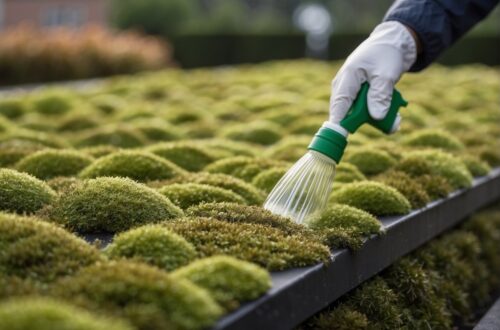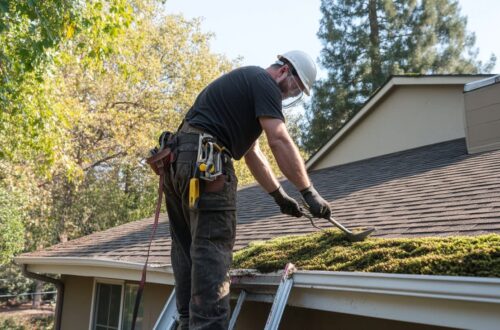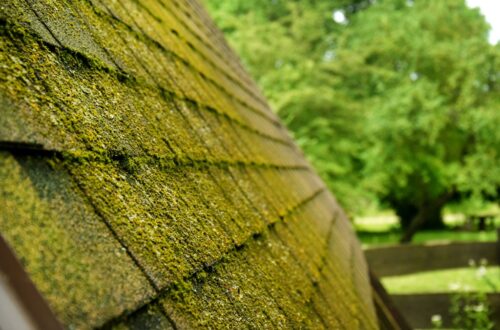Keeping a roof in good condition requires year-round attention. Seasonal changes can have a significant impact on roofing materials, leading to wear and tear that, if left unaddressed, may result in costly repairs. One of the most persistent problems homeowners face is roof moss growth, which can weaken shingles, promote water retention, and ultimately shorten the lifespan of a roof. Incorporating roof moss removal into a seasonal maintenance routine ensures that a home remains structurally sound while maintaining its curb appeal.
Understanding the Impact of Seasonal Changes on Roofs
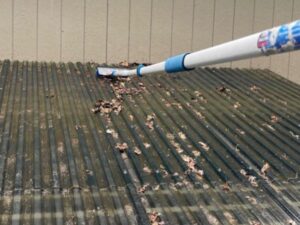 Every season presents unique challenges for a roof. In the winter, heavy snow and ice buildup can strain roofing materials, potentially leading to leaks or damage. Spring brings increased moisture levels, which create the perfect environment for moss growth, while summer’s heat and UV rays can weaken shingles. Autumn contributes to roofing issues by covering surfaces with leaves and debris, often blocking gutters and trapping moisture. Without consistent maintenance, these seasonal changes can accelerate roof deterioration.
Every season presents unique challenges for a roof. In the winter, heavy snow and ice buildup can strain roofing materials, potentially leading to leaks or damage. Spring brings increased moisture levels, which create the perfect environment for moss growth, while summer’s heat and UV rays can weaken shingles. Autumn contributes to roofing issues by covering surfaces with leaves and debris, often blocking gutters and trapping moisture. Without consistent maintenance, these seasonal changes can accelerate roof deterioration.
Moss growth is particularly problematic in humid and damp conditions, often thriving in shaded areas of the roof where moisture lingers. If left unchecked, moss can create a thick layer that traps water, encouraging rot and decay in roofing materials. Seasonal maintenance, including proactive moss removal, is crucial to extending the longevity of a roof.
Identifying Signs of Moss Growth and Roof Damage
Homeowners should regularly inspect their roofs for signs of moss growth and other potential damage. Moss typically appears as green patches or clumps, especially on areas of the roof that receive little sunlight. It can spread rapidly if conditions remain favorable, covering shingles and filling gaps between them.
Beyond moss, seasonal inspections should look for curling or cracked shingles, clogged gutters, and areas with excessive moisture buildup. These are indicators that the roof may need attention. Streaks of black or green discoloration could signal the presence of algae or mildew, both of which contribute to roof deterioration.
Ignoring these warning signs can lead to structural problems, including wood rot, leaks, and weakened support beams. By incorporating moss removal into a regular maintenance schedule, homeowners can prevent minor issues from escalating into costly repairs.
Effective Methods for Roof Moss Removal
There are multiple ways to remove moss from a roof, ranging from manual methods to chemical treatments. One of the safest approaches is using a soft-bristle brush or broom to gently dislodge moss without damaging shingles. This method is particularly effective for light moss growth but may not be sufficient for extensive infestations.
Chemical treatments offer a more thorough solution by killing moss at the root level. These treatments typically involve applying a moss-killing solution that gradually breaks down the plant matter. However, it is essential to use environmentally friendly products that do not harm surrounding vegetation or contaminate water sources.
Another method involves using a pressure washer on a low setting to wash away moss buildup. While this can be effective, excessive pressure can damage shingles, leading to further roofing issues. Proper technique and caution are required to ensure that moss removal does not inadvertently cause harm to the roof.
For those who prefer a long-term solution, installing zinc or copper strips along the roof ridge can help prevent moss growth. When it rains, these metals release ions that create an inhospitable environment for moss, reducing the likelihood of future growth.
Seasonal Roof Maintenance Checklist
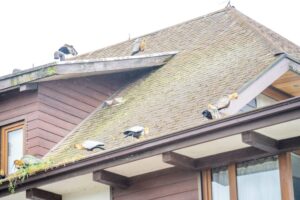 To keep a roof in optimal condition, a seasonal maintenance plan should include moss removal as well as other preventative measures. In the spring, homeowners should conduct a thorough roof inspection to check for any winter damage and remove any moss buildup. Summer provides an excellent opportunity for preventive treatments, such as applying moss-resistant coatings or installing metal strips.
To keep a roof in optimal condition, a seasonal maintenance plan should include moss removal as well as other preventative measures. In the spring, homeowners should conduct a thorough roof inspection to check for any winter damage and remove any moss buildup. Summer provides an excellent opportunity for preventive treatments, such as applying moss-resistant coatings or installing metal strips.
During the fall, it is essential to clear away leaves and debris from both the roof and gutters. Trapped moisture in clogged gutters can contribute to moss growth and accelerate roofing damage. Winter maintenance should focus on ensuring proper insulation and ventilation to prevent ice dams, which can create an environment conducive to moss development.
Regular maintenance not only extends the life of a roof but also helps preserve the home’s structural integrity. By incorporating roof moss removal into seasonal upkeep, homeowners can mitigate damage before it becomes a costly problem.
Professional Roof Maintenance Services
While some homeowners prefer to handle roof maintenance on their own, professional services offer a more thorough approach. Roofing experts have access to specialized tools and treatments that effectively remove moss without harming the shingles. Additionally, professionals can identify underlying issues that may not be apparent during a routine inspection.
Hiring a professional for seasonal maintenance can be especially beneficial for homeowners with steep or multi-level roofs, where accessing all areas safely may be challenging. Roofing specialists also provide long-term solutions, such as preventive treatments and structural reinforcements, to enhance the durability of the roof.
For homeowners who prefer a DIY approach, consulting with a roofing expert about the safest and most effective moss removal methods is recommended. Proper techniques and materials can ensure that maintenance efforts are both successful and sustainable.




